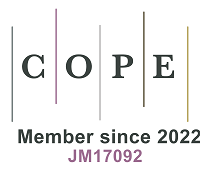REFERENCES
1. Zhang, K.; Schnoor, J. L.; Zeng, E. Y. E-waste recycling: where does it go from here? Environ. Sci. Technol. 2012, 46, 10861-7.
2. Xu, X.; Zeng, X.; Boezen, H. M.; Huo, X. E-waste environmental contamination and harm to public health in China. Front. Med. 2015, 9, 220-8.
3. Huang, S.; Wang, D.; Qi, Z.; Long, C.; Li, G.; Yu, Y. A large-scale nationwide study of urinary phenols in the Chinese population. Sci. Total. Environ. 2023, 894, 164850.
4. Luo, D.; Pan, Y.; Zeng, L.; Du, B.; Li, J.; Mei, S. Occurrence of multiple bisphenol S derivatives in breast milk from Chinese lactating women and implications for exposure in breast-fed infants. Environ. Sci. Technol. Lett. 2021, 8, 176-82.
5. Zhang, T.; Xue, J.; Gao, C. Z.; et al. Urinary concentrations of bisphenols and their association with biomarkers of oxidative stress in people living near E-waste recycling facilities in China. Environ. Sci. Technol. 2016, 50, 4045-53.
6. Du, B.; Shen, M.; Chen, H.; et al. Beyond traditional organophosphate triesters: prevalence of emerging organophosphate triesters and organophosphate diesters in indoor dust from a mega E-waste Recycling Industrial Park in South China. Environ. Sci. Technol. 2020, 54, 12001-12.
7. Lu, S.; Yang, D.; Ge, X.; et al. The internal exposure of phthalate metabolites and bisphenols in waste incineration plant workers and the associated health risks. Environ. Int. 2020, 145, 106101.
8. Wu, Y.; Li, Y.; Kang, D.; et al. Tetrabromobisphenol A and heavy metal exposure via dust ingestion in an E-waste recycling region in Southeast China. Sci. Total. Environ. 2016, 541, 356-64.
9. Fu, P.; Kawamura, K. Ubiquity of bisphenol A in the atmosphere. Environ. Pollut. 2010, 158, 3138-43.
10. Owens, C.V. Jr; Lambright, C.; Bobseine, K.; et al. Identification of estrogenic compounds emitted from the combustion of computer printed circuit boards in electronic waste. Environ. Sci. Technol. 2007, 41, 8506-11.
11. Pan, Y.; Xie, R.; Wei, X.; Li, A. J.; Zeng, L. Bisphenol and analogues in indoor dust from E-waste recycling sites, neighboring residential homes, and urban residential homes: implications for human exposure. Sci. Total. Environ. 2024, 907, 168012.
12. Chen, D.; Kannan, K.; Tan, H.; et al. Bisphenol analogues other than BPA: environmental occurrence, human exposure, and toxicity - a review. Environ. Sci. Technol. 2016, 50, 5438-53.
13. Bittner, G. D.; Yang, C. Z.; Stoner, M. A. Estrogenic chemicals often leach from BPA-free plastic products that are replacements for BPA-containing polycarbonate products. Environ. Health. 2014, 13, 41.
14. Zeng, K.; Zhang, Z.; Liu, L.; et al. A typical derivative and byproduct of tetrabromobisphenol A: development of novel high-throughput immunoassays and systematic investigation of their distributions in Taizhou, an e-waste recycling area in eastern China. Environ. Pollut. 2020, 263, 114382.
15. Czarny-Krzymińska, K.; Krawczyk, B.; Szczukocki, D. Bisphenol A and its substitutes in the aquatic environment: occurrence and toxicity assessment. Chemosphere 2023, 315, 137763.
16. Yu, Y.; Hao, C.; Xiang, M.; Tian, J.; Kuang, H.; Li, Z. Potential obesogenic effects of TBBPA and its alternatives TBBPS and TCBPA revealed by metabolic perturbations in human hepatoma cells. Sci. Total. Environ. 2022, 832, 154847.
17. Li, X.; Wang, X.; Liu, Y.; Zhu, H.; Wang, L. First evidence of occupational and residential exposure to bisphenols associated with an E-waste dismantling site: a case study in China. Ecotoxicol. Environ. Saf. 2023, 263, 115206.
18. Pal, S.; Sahu, A.; Verma, R.; Haldar, C. BPS-induced ovarian dysfunction: protective actions of melatonin via modulation of SIRT-1/Nrf2/NFĸB and IR/PI3K/pAkt/GLUT-4 expressions in adult golden hamster. J. Pineal. Res. 2023, 75, e12869.
19. Duan, Y.; Yao, Y.; Wang, B.; et al. Association of urinary concentrations of bisphenols with type 2 diabetes mellitus: a case-control study. Environ. Pollut. 2018, 243, 1719-26.
20. Kim, J. I.; Lee, Y. A.; Shin, C. H.; Hong, Y. C.; Kim, B. N.; Lim, Y. H. Association of bisphenol A, bisphenol F, and bisphenol S with ADHD symptoms in children. Environ. Int. 2022, 161, 107093.
21. GB 17378.2-2007. The specification for marine monitoring - Part 2: Data processing and quality control of analysis. 2007. https://codeofchina.com/standard/GB17378.2-2007.html. (accessed 11 Oct 2025).
22. Weng, C. Y.; Zhang, Y. Y.; Zhu, F. J.; Jia, S. M.; Ma, W. L. National investigation of bisphenols in the surface soil in China. Sci. Total. Environ. 2024, 956, 177319.
23. Yang, X.; Dai, C.; Zheng, G.; et al. Bisphenol analogues in soils and lettuce (Lactuca sativa L.) around typical factories in eastern China: occurrence, contamination characteristics, and health risks. Environ. Pollut. 2025, 373, 126126.
24. Song, S.; Ruan, T.; Wang, T.; Liu, R.; Jiang, G. Distribution and preliminary exposure assessment of bisphenol AF (BPAF) in various environmental matrices around a manufacturing plant in China. Environ. Sci. Technol. 2012, 46, 13136-43.
25. Brand, E.; Otte, P. F.; Lijzen, J. P. A. CSOIL 2000: an exposure model for human risk assessment of soil contamination: a model description. 2007. https://www.rivm.nl/bibliotheek/rapporten/711701054.pdf. (accessed 11 Oct 2025).
26. United States Environmental Protection Agency. Integrated risk information system. Bisphenol A. CASRN 80-05-7 | DTXSID7020182. https://iris.epa.gov/ChemicalLanding/&substance_nmbr=356. (accessed 11 Oct 2025).
27. EFSA Panel on Food Contact Materials, Enzymes, Flavourings and Processing Aids (CEF). Scientific opinion on the risks to public health related to the presence of bisphenol a (BPA) in foodstuffs. Part II - BPA oxicological assessment and risk characterisation. EFSA. J. 2015, 13, 3978.
28. EFSA Panel on Food Contact Materials, Enzymes and Processing Aids (CEP); Lambré, C.; Barat Baviera, J. M.; Bolognesi, C.; et al. Re-evaluation of the risks to public health related to the presence of bisphenol a (BPA) in foodstuffs. EFSA J. 2023, 21, 6857.
29. Cao, J.; Ma, W.; Gao, Y.; Long, C.; Yu, Y. Derivation of the oral reference dose (RfD) for bisphenol S and bisphenol F based on epidemiological and experimental studies. Ecotoxicol. Environ. Saf. 2025, 293, 118045.
30. Xia, Y.; Ma, W.; Cao, J.; Gao, Y.; Yu, Y.; Long, C. Oral reference dose (RfD) derivation for five bisphenol A alternatives integrating BMD and NOAEL/LOAEL approaches. Ecotoxicol. Environ. Saf. 2025, 303, 118911.
31. Liu, K.; Li, J.; Yan, S.; Zhang, W.; Li, Y.; Han, D. A review of status of tetrabromobisphenol A (TBBPA) in China. Chemosphere 2016, 148, 8-20.
32. Ge, X.; Ma, S.; Huo, Y.; et al. Mixed bromine/chlorine transformation products of tetrabromobisphenol A: potential specific molecular markers in E-waste dismantling areas. J. Hazard. Mater. 2022, 423, 127126.
33. Fu, J.; Zhang, A.; Wang, T.; et al. Influence of E-waste dismantling and its regulations: temporal trend, spatial distribution of heavy metals in rice grains, and its potential health risk. Environ. Sci. Technol. 2013, 47, 7437-45.
34. Zhao, L.; Zhou, F.; Wang, S.; et al. Bisphenol chemicals in surface soil from E-waste dismantling facilities and the surrounding areas: spatial distribution and health risk. Toxics 2024, 12, 379.
35. Huang, D. Y.; Zhao, H. Q.; Liu, C. P.; Sun, C. X. Characteristics, sources, and transport of tetrabromobisphenol A and bisphenol A in soils from a typical e-waste recycling area in South China. Environ. Sci. Pollut. Res. Int. 2014, 21, 5818-26.
36. Wei, D.; Yuan, K.; Ai, F.; et al. Occurrence, spatial distributions, and temporal trends of bisphenol analogues in an E-waste dismantling area: implications for risk assessment. Sci. Total. Environ. 2023, 867, 161498.
37. Wu, Z.; Han, W.; Xie, M.; Han, M.; Li, Y.; Wang, Y. Occurrence and distribution of polybrominated diphenyl ethers in soils from an E-waste recycling area in northern China. Ecotoxicol. Environ. Saf. 2019, 167, 467-75.
38. Qiu, W.; Liu, S.; Chen, H.; et al. The comparative toxicities of BPA, BPB, BPS, BPF, and BPAF on the reproductive neuroendocrine system of zebrafish embryos and its mechanisms. J. Hazard. Mater. 2021, 406, 124303.
39. Hyun, M.; Rathor, L.; Kim, H. J.; et al. Comparative toxicities of BPA, BPS, BPF, and TMBPF in the nematode Caenorhabditis elegans and mammalian fibroblast cells. Toxicology 2021, 461, 152924.
40. Zhang, Z.; Alomirah, H.; Cho, H. S.; et al. Urinary bisphenol A concentrations and their implications for human exposure in several Asian countries. Environ. Sci. Technol. 2011, 45, 7044-50.







